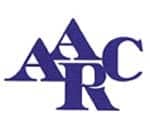Selected clinical abstracts from a variety of journals
1 Effectiveness of isoniazid treatment for latent tuberculosis infection among human immunodeficiency virus (HIV)-infected and HIV-uninfected injection drug users in methadone programs
from Clinical Infectious Diseases. 2003;37:000.
Jerod N. Scholten,1 Cynthia R. Driver,1 Sonal S. Munsiff,1 Katherine Kaye,1 Mary Ann Rubino,1 Marc N. Gourevitch,6 Caroline Trim,2 James Amofa,5 Randy Seewald,3 Esther Highley,4 and Paula I. Fujiwara1,7

Affiliations
1New York City Department of Health and Mental Hygiene, 2Greenwich House West, 3Greenwich House East, and 4Lower Eastside Services Center, New York, and 5Bronx Lebanon Hospital and 6Montefiore Medical Center, Albert Einstein College of Medicine, Bronx, NY; and 7Division of Tuberculosis Elimination, National Center for HIV, STD, and TB Prevention, Centers for Disease Control and Prevention, Atlanta
2 Eosinophil-induced release of acetylcholine from differentiated cholinergic nerve cells
Deborah A. Sawatzky,1 Paul J. Kingham,1 Niamh Durcan,2 W. Graham McLean,1 and Richard W. Costello2
from American Journal of Physiology Lung Cellular and Molecular Physiology. 2003;285:L1296-L1304.
One immunological component of asthma is believed to be the interaction of eosinophils with parasympathetic cholinergic nerves and a consequent inhibition of acetylcholine muscarinic M2 receptor activity, leading to enhanced acetylcholine release and bronchoconstriction. Here we have used an in vitro model of cholinergic nerve function, the human IMR32 cell line, to study this interaction. IMR32 cells, differentiated in culture for 7 days, expressed M2 receptors. Cells were radiolabeled with [3H]choline and electrically stimulated. The stimulation-induced release of acetylcholine was prevented by the removal of Ca2+. The muscarinic M1/M2 receptor agonist arecaidine reduced the release of acetylcholine after stimulation (to 82 ± 2% of control at 10-7 M), and the M2 receptor antagonist AF-DX 116 increased it (to 175 ± 23% of control at 10-5 M), indicating the presence of a functional M2 receptor that modulated acetylcholine release. When human eosinophils were added to IMR32 cells, they enhanced acetylcholine release by 36 ± 10%. This effect was prevented by inhibitors of adhesion of the eosinophils to the IMR32 cells. Pretreatment of IMR32 cells with 10 mM carbachol, to desensitize acetylcholine receptors, prevented the potentiation of acetylcholine release by eosinophils or AF-DX 116. Acetylcholine release was similarly potentiated (by up to 45 ± 7%) by degranulation products from eosinophils that had been treated with N-formyl-methionyl-leucyl-phenylalanine or that had been in contact with IMR32 cells. Contact between eosinophils and IMR32 cells led to an initial increase in expression of M2 receptors, whereas prolonged exposure reduced M2 receptor expression.
Affiliations 1Department of Pharmacology and Therapeutics, University of Liverpool, Liverpool, United Kingdom; and 2Department of Medicine, Royal College of Surgeons in Ireland, Beaumont Hospital, Dublin, Ireland
3 Human mast cell subtypes in conjunctiva of patients with atopic keratoconjunctivitis, ocular cicatricial pemphigoid, and Stevens-Johnson syndrome
from Ocular Immunology and Inflammation. 2003;11:211-222.
Lijing Yao,1 Stefanos Baltatzis,2 Panayotis Zafirakis,2 Charalampos Livir-Rallatos,2 Adamantia Voudouri,2 Nikos N. Markomichelakis,2 Tongzhen Zhao,1 and C. Stephen Foster1
Purpose: Investigate mast cell (MCS) subtypes in atopic keratoconjunctivitis (AKC), ocular cicatrical pemphigoid (OCP), and Stevens-Johnson syndrome (SJS). Methods: MCS subtypes were determined by immunohistochemistry of conjunctiva (obtained from 34 patients—9 AKC, 9 OCP, 9 SJS, and 7 normal) using monoclonal antibodies directed against chymase (MCC) and tryptase (MCT). Double staining was used to distinguish MCS as positive for both chymase and tryptase (MCTC). Results: The number of MCS was significantly increased in AKC, OCP, and SJS patients, compared to normal subjects. MCC were especially high in AKC, and moderately high in OCP. MCT and MCTC were similar in each disease group. Conclusions: While the AKC findings were not surprising, the result in OCP and SJS suggests that MCS play an underappreciated role in the inflammatory process of these disorders. Disparate proportions of MCS subtypes in these diseases may imply differential functions of MCS in these disorders.
Affiliations 1Immunology and Uveitis Service and Hilles Immunology Laboratory, Department of Ophthalmology, Massachusetts Eye and Ear Infirmary, Harvard Medical School, Boston
2Immunology and Uveitis Service and Hilles Immunology Laboratory, Department of Ophthalmology, Massachusetts Eye and Ear Infirmary, Harvard Medical School, Boston, and Department of Ophthalmology, General Hospital of Athens Medical School, Athens, Greece










